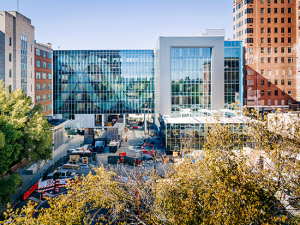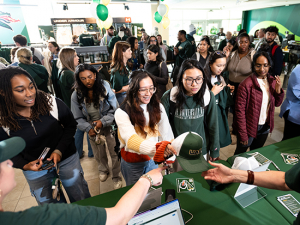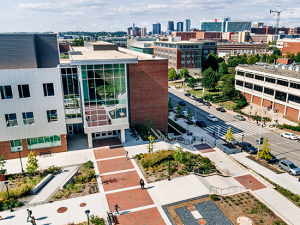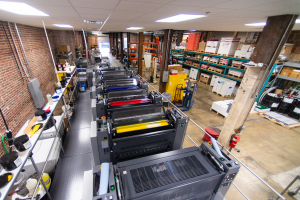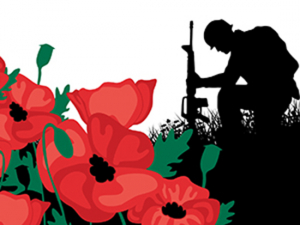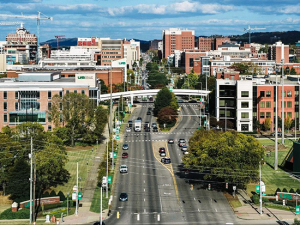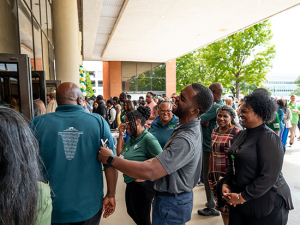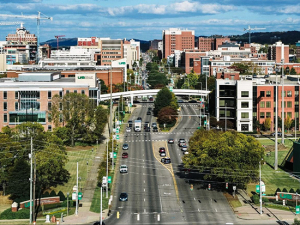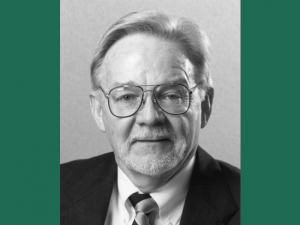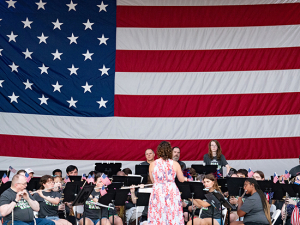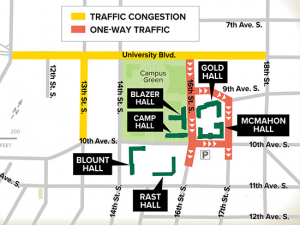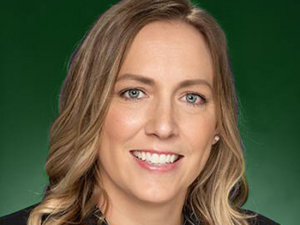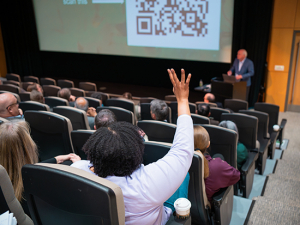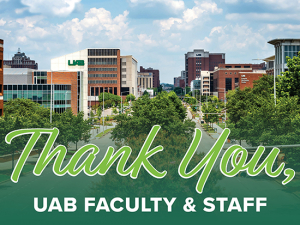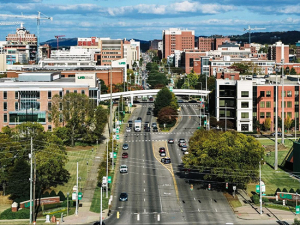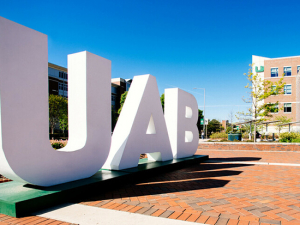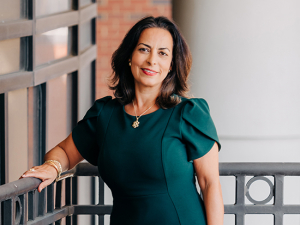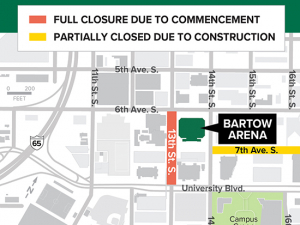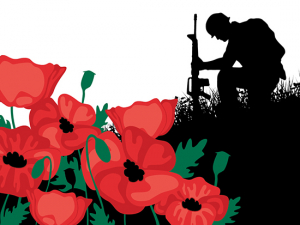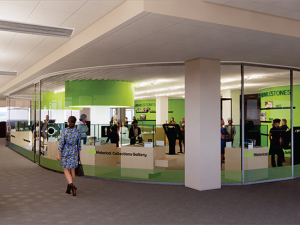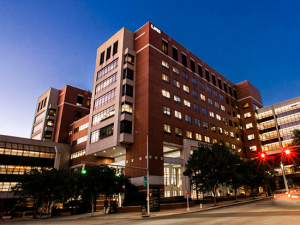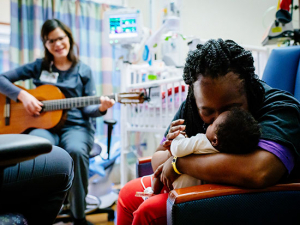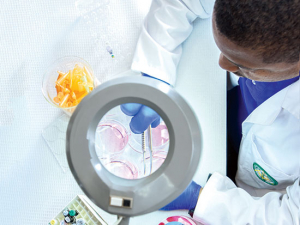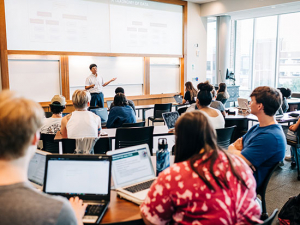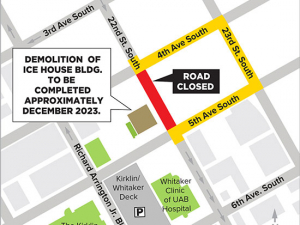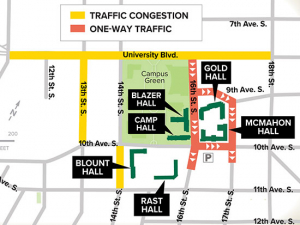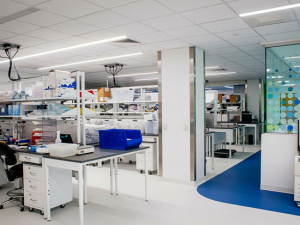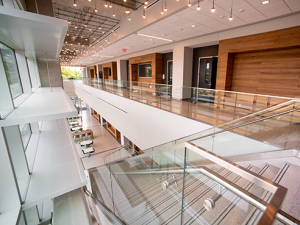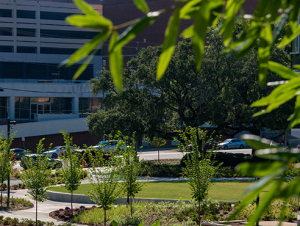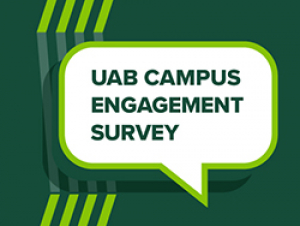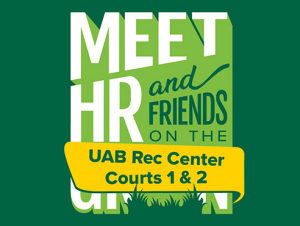 As UAB celebrates its 50th anniversary in 2019, the focus is firmly on a new era of success. In the past few months alone, the university has recorded its third straight year of record enrollment; concluded the $1 billion Campaign for UAB, the largest fundraising effort in university history; surpassed $500 million in research grants and awards for the first time; and notched the first bowl win and conference championship for UAB Football. (See all the highlights in the 2018 Annual Report.)
As UAB celebrates its 50th anniversary in 2019, the focus is firmly on a new era of success. In the past few months alone, the university has recorded its third straight year of record enrollment; concluded the $1 billion Campaign for UAB, the largest fundraising effort in university history; surpassed $500 million in research grants and awards for the first time; and notched the first bowl win and conference championship for UAB Football. (See all the highlights in the 2018 Annual Report.)
Forging the Future, a five-year strategic plan that outlines institutionwide strategies through 2023, lays the groundwork for continued growth. The plan addresses the trends and challenges facing higher education and academic medical centers in the 21st century, setting out goals and objectives around three common themes: increasing access to UAB’s world-class education, patient care and research; enhancing alignment of people and programs; and investing in grand ideas to tackle important problems facing society.
The UAB Strategic Planning Council and members of its Mission Pillar Subgroups have engaged in extensive discussions to identify appropriate universitywide metrics to gauge the progress of Forging the Future, says Senior Vice President and Provost Pam Benoit, Ph.D., co-chair of the Strategic Planning Council. These metrics capture current status and annual goals for each mission pillar, as well as the foundational areas of diversity, philanthropy and stewardship. They are now displayed on a metrics dashboard on the Forging the Future website, which will be updated regularly throughout the life of the plan.
Here’s where you come in
“Everyone has the ability to have an impact on the plan,” said President Ray Watts. “Our deans and vice presidents have been charged with taking the universitywide metrics and reflecting them in their own strategic plan. That filters down to departments and units, and ultimately each one of us has to answer the question, ‘What can I do that actually has an impact?’ Look at the dashboard and ask yourself, ‘If this is a goal for us as a university, how can I help?’ Whether you are faculty, staff or a student, you have an important role to play.”
| “Everyone has the ability to have an impact on the plan… Look at the dashboard and ask yourself, ‘If this is a goal for us as a university, how can I help?’ |
As an example, consider student retention (Education: Objective 2). “Retention has a lot to do with the practices of our faculty,” Benoit said. “But staff play a vital role as well. Staff members are often on the front line of interacting with students, and those interactions factor into whether we can keep a student. If you are on the facilities team, you help shape the appearance of our campus. And that certainly influences whether current students want to stay here.”
Similarly, anyone who works in UAB’s health enterprise can have a direct effect on patient satisfaction (Patient Care: Objective 1). Students and employees with an innovative idea for a new business can find support and even funding from UAB’s Harbert Institute for Innovation and Entrepreneurship (Research, Innovation and Economic Development: Objective 4). And it has never been easier to advance UAB’s Community Engagement mission. The new BlazerPulse website (addressing Community Engagement: Objectives 1, 2 and 4) lets students, faculty and staff identify engagement opportunities and track their efforts, multiplying their impact. “No matter who you are, you can help UAB excel,” Benoit said. “We’re all in this together.”
Plan resources and progress
Forging the Future gives UAB schools and units clear guidance as they set priorities and plan investments with their own strategic planning processes, says Senior Vice President for Finance and Administration Allen Bolton, co-chair of the Strategic Planning Council.  Two major Forging the Future initiatives — the UAB Grand Challenge and Signature Core Curriculum — are already transforming UAB’s campus.“With the brainpower and energy of our students, faculty and staff, there’s no limit to what we can achieve,” Bolton said. “Forging the Future gives us a common vision.” Parallel with the strategic planning effort, UAB is making a phased transition to a new budget model and has revised its annual budgeting process to identify and prioritize requests that support Forging the Future goals, Bolton notes. In addition, the new Strategic Investment Fund has been developed to help execute large, cross-institutional initiatives that move the university forward.
Two major Forging the Future initiatives — the UAB Grand Challenge and Signature Core Curriculum — are already transforming UAB’s campus.“With the brainpower and energy of our students, faculty and staff, there’s no limit to what we can achieve,” Bolton said. “Forging the Future gives us a common vision.” Parallel with the strategic planning effort, UAB is making a phased transition to a new budget model and has revised its annual budgeting process to identify and prioritize requests that support Forging the Future goals, Bolton notes. In addition, the new Strategic Investment Fund has been developed to help execute large, cross-institutional initiatives that move the university forward.
Two major Forging the Future initiatives — the UAB Grand Challenge and Signature Core Curriculum — are already transforming UAB’s campus. More than 70 individuals and groups submitted initial proposals to the Grand Challenge, which aims to solve one or more significant societal problems. Many of these ideas coalesced into several large teams, with six projects earning planning grants up to $30,000. Each now is being evaluated by outside reviewers, with a final selection due to be made in April.
| Provide input on the core competencies for undergraduate education with a brief, two-question survey open through March 17 at go.uab.edu/coresurvey. |
Meanwhile, the Signature Core Curriculum committee, chaired by faculty leaders, is engaging the campus in multiple discussions about the important competencies today’s students need to become socially conscious global leaders and citizens. “The faculty and the students are excited,” Benoit said. “This is a powerful intellectual discussion that will have an incredible impact on students.”
“Forging the Future capitalizes on UAB’s unique strengths, longtime partnership with our community and our shared success over the past several years,” Watts said. “Together, we will make even greater strides in all areas of our mission and build upon UAB’s global leadership in education, research and innovation, and patient care.”
